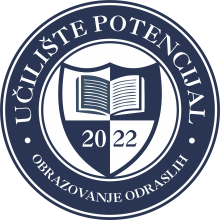- Naslovna
- Programi
- Internetski marketing i brandiranje
- Objektno orijentirano programiranje (C#)
- Web programiranje (C# i .Net)
- Dizajniranje i upravljanje bazama podataka
- Korištenje proračunske tablice u poslovanju
- Izrada multimedijskog sadržaja u poslovanju
- Klijentski operacijski sustavi
- Mobilno programiranje (Java)
- Primjena aplikacijskog softvera u knjigovodstvu
- Izrada poslovnog plana
- Osnovni koncepti testiranja programske podrške
- UX dizajniranje
- Razvoj i dizajn web sučelja u WordPressu
- Upravljanje osobnim financijama
- Upravljanje IoT sustavima
- Statistička obrada i prezentiranje podataka
- Specijalist/ica za digitalni marketing
- O nama
- Blog
- Nastava
- Kontakt
Static Testing
practice quiz


![]()
UČILIŠTE POTENCIJAL

ZAŠTO POTENCIJAL?
Samo neki od razloga zašto nas odabrati
Iskusni predavači
Naši predavači su stručnjaci u svojim poljima i posvećeni su vašem napretku.
Prilagodljivi raspored
Online učenja olakšava pristup obrazovanju, bez obzira na vašu trenutačnu situaciju.
Kvaliteta obrazovanja
Naša predanost izvrsnosti odražava se u našim pomno osmišljenim programima
Stalna podrška
Tu smo kako bi vam pomogli riješiti sve izazove te ostvarite osobne ciljeve

POTENCIJAL
Naši polaznici

“ Učenje na Učilištu Potencijal je bilo transformirajuće iskustvo za mene. Profesori su stručni i pristupačni, a prilagodljivi rasporedi su mi omogućili da istovremeno radim i usavršavam svoje vještine. Hvala vam na prilici za rast ”

“ Iako sam već imao dosta radnog iskustva, uvijek sam osjećao da mi nešto nedostaje. Učilište Potencijal mi je omogućilo da nadopunim svoje znanje i steknem nove perspektive u poslu. Sada sam konkurentniji nego ikad prije ”
24/7
Kontaktirajte nas:
info@ucilistepotencijal.hr



Informacije
- Radno vrijeme:
- Pon-Pet: 09-12 | 16-21
- Adresa:
- Matije Gupca 90,
- Cret Bizovački, Bizovac
- OIB: 06310345317

